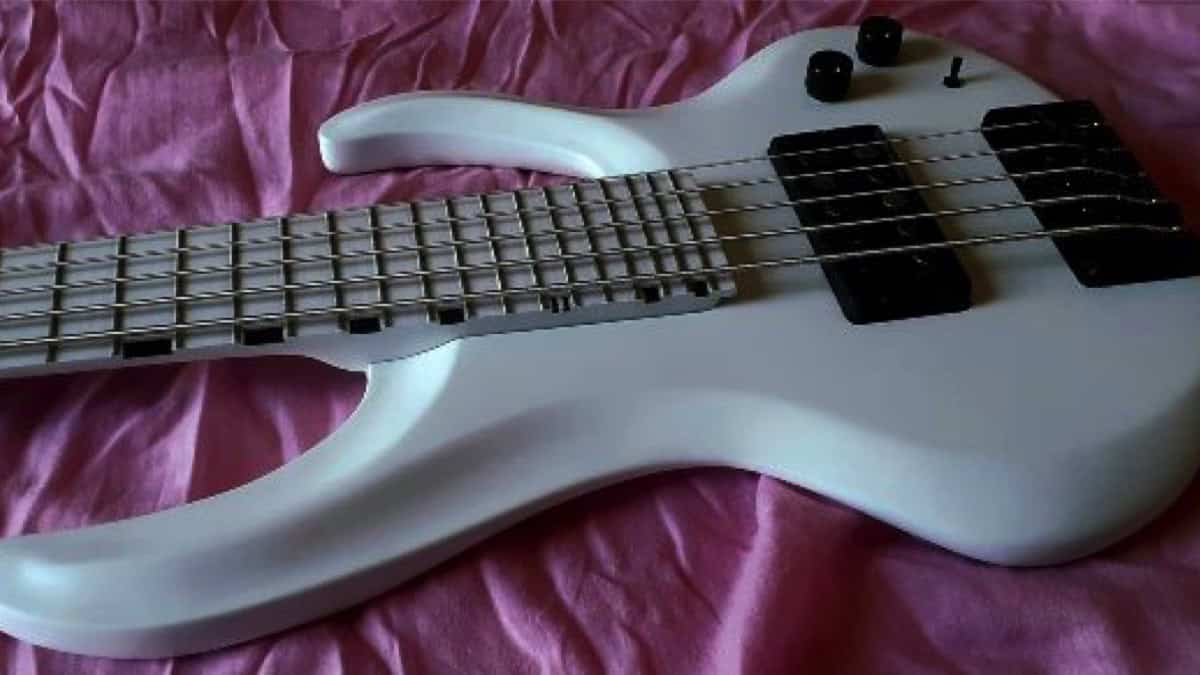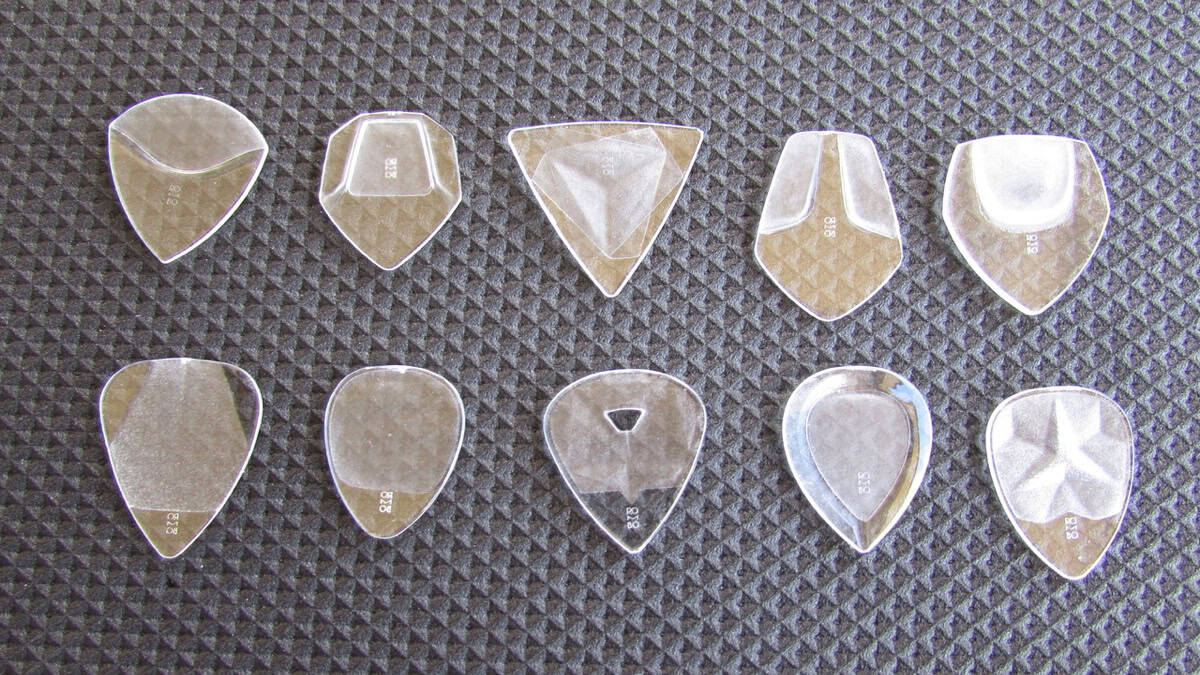Latest
Going Vamping by Steve Gregory

 There are a number of musical devices that can be used to build deep, meaningful worship experiences. One such device that is often used in both live and recorded worship music is the vamp. A vamp is defined as a short musical progression that is repeated, often as an introduction to another section. In vamps within the worship setting, the worship leader often speaks, prays, or ad-libs vocally while the worship team repeats a single chord progression a number of times. During this section, the worship team is responsible for keeping the music alive and responding to the worship leader. In a very common implementation of this technique, the dynamic level of the song is lowered at the beginning of the vamp section and then slowly built to a point to where the song “tips over” to the final chorus or two. Time spent watching live performances of worship teams will inevitably result in seeing this done.
There are a number of musical devices that can be used to build deep, meaningful worship experiences. One such device that is often used in both live and recorded worship music is the vamp. A vamp is defined as a short musical progression that is repeated, often as an introduction to another section. In vamps within the worship setting, the worship leader often speaks, prays, or ad-libs vocally while the worship team repeats a single chord progression a number of times. During this section, the worship team is responsible for keeping the music alive and responding to the worship leader. In a very common implementation of this technique, the dynamic level of the song is lowered at the beginning of the vamp section and then slowly built to a point to where the song “tips over” to the final chorus or two. Time spent watching live performances of worship teams will inevitably result in seeing this done.
What I find to be most interesting about vamping in worship is the enormous disparity between the possible effects. When done well, the swell of emotional worship can be overwhelming and amazing. When done without thought, the vamp section ends up sounding awkward and clumsy. On one hand you have an eruption of worship; on the other hand you have worship dropped to the ground.
Since this technique is so common and can have dramatic results (both good and bad), it is important for us as worship bassists to think about what can be done to make a vamp section successful. To begin, it is very important to realize that one possible pitfall is the vamp structure itself: usually consisting of 1-4 repeating chords, there is not a big song structure to hide behind. In addition, the consistent, repeating nature of the vamp is used to heighten worship and increase congregational involvement and therefore takes away drastic reharmonization as an option. Since so little is given in chord variance, it is important to look for other areas with which to work. Here are a few suggestions of techniques to improve the vamp experience:
Dynamics
I will admit that this is an area to which I give a lot of attention both as a bassist and as a teacher, but I do so for good reason. Dynamics give the worship bassist dramatic “shaping” abilities that apply perfectly to vamp sections. When playing a vamp, think about the shape that the section should take on: does it start soft and rise steadily to loud? Are there “hills” or “valleys” that a particular vamp demands? Will this change, depending on the worship leader?
Do not be afraid to implement effective dynamics and use the whole range of sound to your advantage. If the vamp goes for a longer time than you expected, it is very easy to run out of headroom too early. This is a quick way to reach the aforementioned “awkward and clumsy” stage!
Rhythm
Rhythm is a great tool for the worship bassist when building a vamp. In some cases, rhythm can provide the ability to shape the vamp section much like that which can be done with dynamics: longer, held notes at the beginning of the vamp lead and build to a busier rhythmic line toward the end of the section.
In other cases, the bass rhythm figure may be important to maintain, but accents on certain notes can propel the line forward. This is particularly true when working with a drummer who listens and carries on a musical conversation with the bassist. A single accent, played on the same rhythmic pattern, can change the effect entirely.
Arpeggiation
As I mentioned above, the vamp offers a static progression from which to work. In many cases, the melodic and rhythmic interest of a bass line can be increased by playing patterns derived from the arpeggios of the chords. It is important to regularly practice arpeggios and put on big ears when using them in worship, as it is very easy to lean into a note that does not sit with the group or walk yourself far away from comfortable transitions within the progression. Once again, the line between “awesome” and “awkward” can become very thin!
This is a very small list of possible techniques worship bassists can employ during a vamp, but it is important to remember that they are just techniques. Musical approaches such as these are simply tools to be used thoughtfully, not parts to put together in a formula. Every vamp will be different and will require the worship bassist to listen to the worship leader and the other instrumentalists. The bassist has the ability to lead with their choices (you will be amazed at how many musicians look to the bass for dynamic, rhythmic, and melodic cues!), but must also be willing to be led. Vamping can be tricky, but can ultimately create worship beyond compare.
Since I have listed only a few ideas about vamping, I would love to hear your thoughts! Let me know what you have found to be effective in your worship vamps by leaving a comment below.
Until next time, I hope that your bass playing is blessed and that you can bless others through your bass playing!
Gear News
New Gear: Alberto Rigoni Signature Bass, the VPR5 by Gaetano Costanzo!

Alberto Rigoni Signature Bass, the VPR5 by Gaetano Costanzo!
Internationally renowned bassist ALBERTO RIGONI (soloist, BAD AS, Vivaldi Metal Project, TwinSpirits, etc.) is proud to announce the release of his signature bass VPR5 made by renowned Italian luthier Gaetano Costanzo!
The bass is entirely handmade in Italy, without the use of CNC or other machinery, and has rather special features. The VPR is a 5-string bass (but also available as a 4-string) with 30 frets, Seymour Duncan pickups, Music Man Alnico style, passive electronics (volume, tone and a switch to select series/parallel/single-coil mode), alder body, and American maple neck and fingerboard. Gotoh tuners that ensure perfect intonation. The bass is totally painted white (nitro finish) but other colors can be requested. The VPR has a weight of about 2.9 kg and suitable for any genre.
For more information contact Gaetanobass77@gmail.com or visit online at www.instagram.com/gaetanocostanzoluthier or www.facebook.com/GaetanoCostanzoLuthier
Bass Videos
Interview With Bassist Graham Stanush

Bassist Graham Stanush…
Return to Dust is keeping Grunge alive and well! They have a new self-titled album that went out on May 3rd, 2024 and will be super busy promoting this project in the near future.
Graham Stanush is the bass powerhouse driving their sound and adding vocals to the mix. Join me as we hear all about Graham’s musical journey, details about the new album, how he gets his sound and their plans for the future.
Featured Videos:
Visit Online:
linktr.ee/returntodust
instagram.com/returntodustband/
twitter.com/Returntodustbnd
youtube.com/@returntodustband
tiktok.com/@returntodustband
Bass Videos
Review: CrystalBright Rombo Picks

CrystalBright Rombo Picks
PR SamplePlaying bass with a pick is still a touchy subject in our community. I believe you should be able to use whatever you need to get your sound. Even though I mostly play with my fingers, I like to check out innovative new picks that might have something new to offer, sonically speaking.
Judith and Carlos from Rombo recently contacted me about a new material called CrystalBright that they have been researching for the last 12 months and offered to send some prototype picks. After trying them out, I put together this video with my findings.
For more info check out @rombopicks
Latest
This Week’s Top 10 Basses on Instagram

Check out our top 10 favorite basses on Instagram this week…
Click to follow Bass Musician on Instagram @bassmusicianmag
FEATURED @sireusaofficial @ricardosguitars @gullone.bajos @godin_guitars @sandbergguitars @adamovicbasses @bassbros.uk @baumguitars @harleybentonofficial @dingwallguitars
Gear
New Joe Dart Bass From Sterling By Music Man

Sterling by Music Man introduces the Joe Dart Artist Series Bass (“Joe Dart”), named after and designed in collaboration with the celebrated Vulfpeck bassist.
Above photo credit: JORDAN THIBEAUX
This highly-anticipated model marks the debut of the Dart bass in the Sterling by Music Man lineup, paying homage to the Ernie Ball Music Man original that all funk players know and love. The bass embodies many of the original model’s distinctive features, from its iconic minimalist design to the passive electronics.

The design process prioritized reliability, playability, and accessibility at the forefront. Constructed from the timeless Sterling body, the Dart features a slightly smaller neck profile, offering a clean tone within a comfortable package. The body is crafted from soft maple wood for clarity and warmth while the natural finish emphasizes the simple yet unique look.
Engineered for straightforward performance, this passive bass features a ceramic humbucking bridge pickup and a single ‘toaster’ knob for volume control. Reliable with a classic tone, it’s perfect for playing in the pocket. The Dart is strung with the all-new Ernie Ball Stainless Steel Flatwound Electric Bass Strings for the smoothest feel and a mellow sound.

The Sterling by Music Man Joe Dart Bass is a special “Timed Edition” release, exclusively available for order on the Sterling by Music Man website for just one month. Each bass is made to order, with the window closing on May 31st and shipping starting in November. A dedicated countdown timer will indicate the remaining time for purchase on the product page. Additionally, the back of the headstock will be marked with a “2024 Crop” stamp to commemorate the harvest year for this special, one-of-a-kind release.
The Joe Dart Bass is priced at $399.99 (MAP) and can be ordered globally at https://sterlingbymusicman.com/products/joe-dart.
To learn more about Joe Dart, visit the official Vulfpeck artist site here https://www.vulfpeck.com/.











